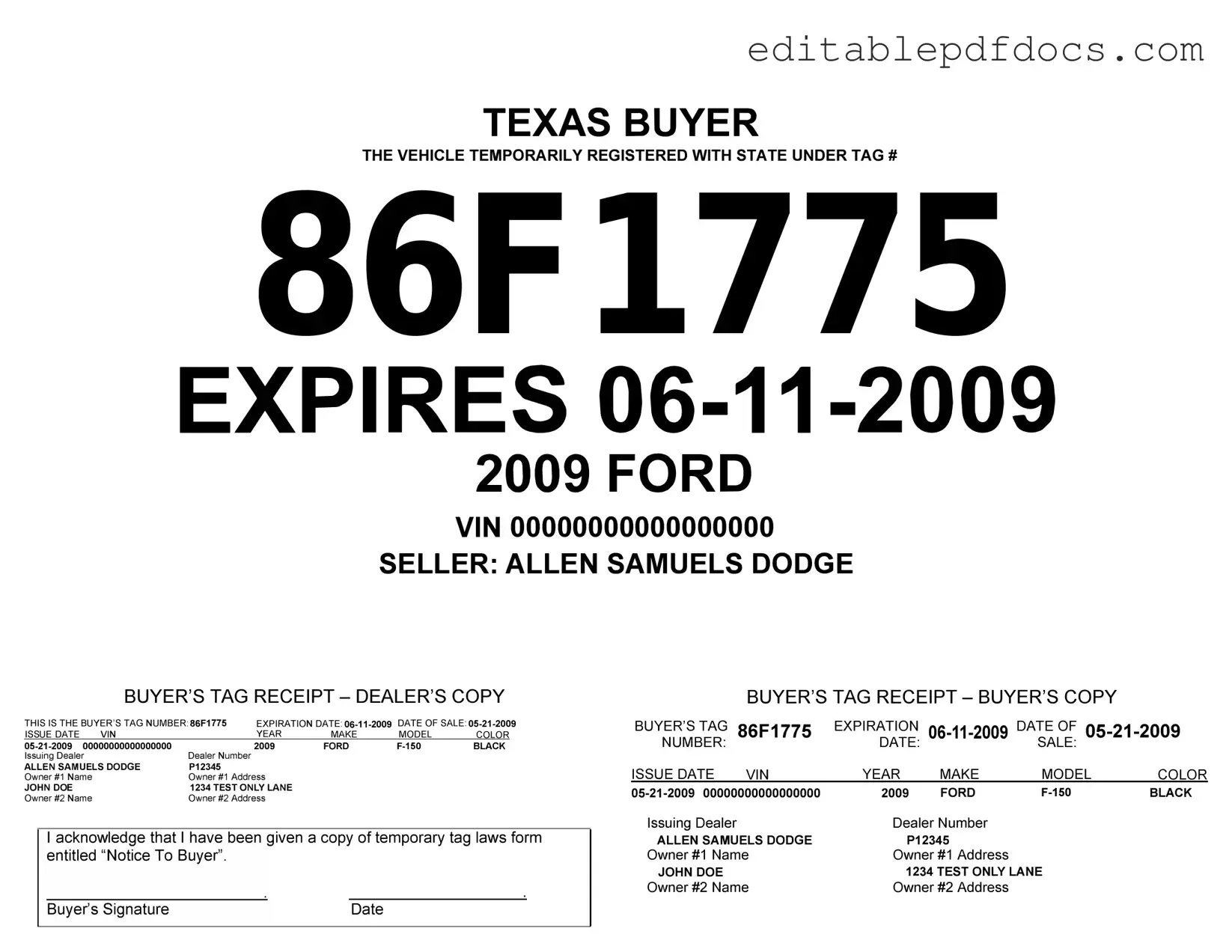Filling out the Texas Temporary Tag form can seem straightforward, but many individuals make common mistakes that can lead to delays or complications. One frequent error is providing incorrect vehicle information. This includes the Vehicle Identification Number (VIN), make, model, and year. A simple typo can cause significant issues, so double-checking this information is crucial.
Another common mistake is failing to sign the form. A signature is not just a formality; it validates the information provided and confirms that the applicant agrees to the terms. Omitting a signature can result in the form being rejected, leaving the individual without a temporary tag.
Many people also overlook the importance of including the correct payment. The Texas Temporary Tag form requires a fee, and submitting the wrong amount can cause delays. Always verify the current fee and ensure that the payment method is acceptable to avoid complications.
In addition, individuals often neglect to provide proof of insurance. Texas law mandates that all vehicles must have insurance coverage. Without this documentation, the application for a temporary tag may be denied, leaving the vehicle owner in a bind.
Some applicants mistakenly assume that they can use a photocopy of their identification. However, the form requires a valid government-issued ID. Using an original document ensures that the application is processed smoothly and without unnecessary delays.
Another error involves the failure to complete the form in its entirety. Leaving sections blank can lead to confusion and may result in the rejection of the application. It’s essential to read through the entire form and ensure that all required fields are filled out accurately.
Inaccurate contact information is another pitfall. Providing a wrong phone number or email address can hinder communication from the processing office. It’s vital to ensure that all contact details are correct so that any issues can be addressed promptly.
Some individuals rush through the process and do not take the time to review their application. This oversight can lead to multiple mistakes that could have been easily avoided. Taking a moment to review the form before submission can save time and frustration.
Additionally, individuals often forget to check the expiration date of their temporary tag. Temporary tags are valid for a limited time, and failing to renew or replace them in a timely manner can lead to legal issues. Staying aware of the expiration date is crucial for compliance.
Lastly, many applicants do not keep a copy of the submitted form for their records. Having a copy can be beneficial if any questions arise or if there is a need to reference the information later. Keeping organized records can help prevent future complications.
